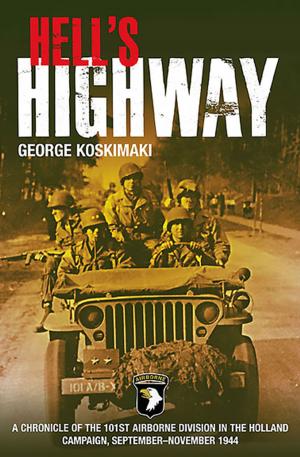Special Operations in the American Revolution
Nonfiction, History, Americas, United States, Revolutionary Period (1775-1800), Military| Author: | Robert L. Tonsetic | ISBN: | 9781612001661 |
| Publisher: | Casemate | Publication: | July 19, 2013 |
| Imprint: | Casemate | Language: | English |
| Author: | Robert L. Tonsetic |
| ISBN: | 9781612001661 |
| Publisher: | Casemate |
| Publication: | July 19, 2013 |
| Imprint: | Casemate |
| Language: | English |
When the American Revolution began, the colonial troops had little hope of matching His Majesty’s highly trained, experienced British and German legions in confrontational battle. Indeed, Washington’s army suffered defeat after defeat in the first few years of the war, fighting bravely but mainly trading space for time. However, the Americans did have a trump, in a reservoir of tough, self-reliant frontier fighters, who were brave beyond compare, and entirely willing to contest the King’s men with unconventional tactics.
In this book, renowned author, and former U.S. Army Colonel, Robert Tonsetic describes and analyzes numerous examples of special operations conducted during the Revolutionary War. While the British might seize the coastlines, the interior still belonged to the Americans should the Empire venture inward. Most of the operations were conducted by American irregulars and volunteers, carefully selected, with specialized skills, and led by leaders with native intelligence.
While General Washington endeavored to confront the Empire on conventional terms—for pure pride’s sake at the founding of the Republic--he meantime relied on his small units to keep the enemy off balance. The fledgling Continental Navy and Marines soon adopted a similar strategy. Realizing that the small American fleet was no match for the powerful British navy in major sea battles, the new Navy and its Marines focused on disrupting British commercial shipping in the Atlantic and Caribbean, and launching raids against British on-shore installations first in the Bahamas and then on the British coastline itself.
As the war continued, Washington increasingly relied on special operations forces in the northeast as well as in the Carolinas, and ad hoc frontiersmen to defy British sovereignty inland. When the British and their Indian allies began to wage war on American settlements west of the Appalachians, Washington had to again rely on partisan and militias to conduct long-range strikes and raids targeting enemy forts and outposts.
Throughout the war, what we today call SpecOps were an integral part of American strategy, and many of the lessons learned and tactics used at the time are still studied by modern day Special Operations forces. As this book establishes, the improvisation inherent in the American spirit proved itself well during the Revolution, continuing to stand as an example for our future martial endeavors.
When the American Revolution began, the colonial troops had little hope of matching His Majesty’s highly trained, experienced British and German legions in confrontational battle. Indeed, Washington’s army suffered defeat after defeat in the first few years of the war, fighting bravely but mainly trading space for time. However, the Americans did have a trump, in a reservoir of tough, self-reliant frontier fighters, who were brave beyond compare, and entirely willing to contest the King’s men with unconventional tactics.
In this book, renowned author, and former U.S. Army Colonel, Robert Tonsetic describes and analyzes numerous examples of special operations conducted during the Revolutionary War. While the British might seize the coastlines, the interior still belonged to the Americans should the Empire venture inward. Most of the operations were conducted by American irregulars and volunteers, carefully selected, with specialized skills, and led by leaders with native intelligence.
While General Washington endeavored to confront the Empire on conventional terms—for pure pride’s sake at the founding of the Republic--he meantime relied on his small units to keep the enemy off balance. The fledgling Continental Navy and Marines soon adopted a similar strategy. Realizing that the small American fleet was no match for the powerful British navy in major sea battles, the new Navy and its Marines focused on disrupting British commercial shipping in the Atlantic and Caribbean, and launching raids against British on-shore installations first in the Bahamas and then on the British coastline itself.
As the war continued, Washington increasingly relied on special operations forces in the northeast as well as in the Carolinas, and ad hoc frontiersmen to defy British sovereignty inland. When the British and their Indian allies began to wage war on American settlements west of the Appalachians, Washington had to again rely on partisan and militias to conduct long-range strikes and raids targeting enemy forts and outposts.
Throughout the war, what we today call SpecOps were an integral part of American strategy, and many of the lessons learned and tactics used at the time are still studied by modern day Special Operations forces. As this book establishes, the improvisation inherent in the American spirit proved itself well during the Revolution, continuing to stand as an example for our future martial endeavors.















